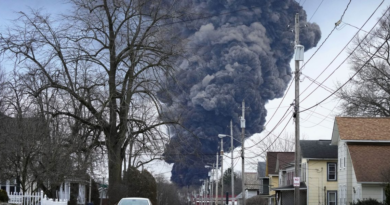Meet the asset managers who smell value in the commercial real estate crisis
“I think that I’m a little contrarian in that I continue to believe in office,” KDM Financial CEO Holly MacDonald-Korth tells Fortune. And she’s put her money where her mouth is. As chief of the Miami-based mortgage lender, MacDonald-Korth launched a $350 million fund earlier this year, with a 20% allocation to nonresidential commercial property—in other words, offices.
“We’re currently in a trough … But I don’t think that [in the] long term, offices are going away forever.”
Collapsing office property values and the threat of an urban “doom loop” stemming from remote work have dominated headlines recently (including at Fortune). But strong fundamentals in other commercial real estate subsectors (such as industrial and retail properties) as well as signs of an office rebound in specific regional markets, are messaging “value” to private capital.
Consider Paul Kelly, DWS Group’s global head of alternatives, who sees value in commercial real estate—but not necessarily of the cubicle variety. “We feel that office [real estate] is going to remain structurally challenged, at least through 2024, and probably into 2025 as well. But there are other areas within the commercial real estate space where we’re much more constructive in the U.S.,” Kelly told Fortune. “I would point to the industrial space, residential, and, to some degree, retail as well.” Kelly, who previously worked at Blackstone and JPMorgan, recently pointed to CRE as a potential value sector in his annual letter to DWS investors.
Record-high commercial property vacancy rates, more than half a trillion dollars of losses in property values, and high interest rates have cut into owners’ margins and squeezed developers looking to refinance. That’s frozen the flow of capital coming into the sector: Last November, CBRE Group estimated that there would be only $389 billion in deals for 2024, the lowest total in over a decade.
But one key factor that’s pushed the market down could be poised to send it back up. High interest rates have made it prohibitively expensive for owners to refinance properties, threatening a wave of defaults. If the Fed starts dropping interest rates later this year, as markets expect, the CRE market would feel those effects immediately.
“In CRE lending, we’re on the front lines of the impacts of rate changes,” MacDonald-Korth said. “Things are going to get better when interest rates come down.”
Although office properties have generated the most negative news in the sector, they represent a smaller percentage of the commercial market than you might expect: Of the roughly $1 trillion in commercial real estate debt maturing next year, only around $200 billion is for office properties, according to Kelly. While office real estate faces a more challenging path to recovery, the commercial sector at large stands to benefit from relatively solid fundamentals, a lower interest rate environment, and an infusion of private capital, Kelly says.
“Property fundamentals, with the exception of office, are essentially sound, and supply shortages may propel strong rent growth over the next several years,” Kelly wrote in his annual letter. “Market conditions are creating a unique short- and medium-term opportunity for real estate debt.”
The gains likely won’t be distributed equally, though. Experts are predicting a bifurcation in the real estate market, where newer, luxury properties will attract demand at the expense of older, less premium ones, which could face demolition. That differentiation will play out geographically, too: Kelly and MacDonald-Korth pointed to the South, Sunbelt, and Midwest as potential growth areas.
“There are places in the country where [people] are returning to work more quickly than others,” said Kelly. “I think the Southeast is much more back to the office than areas like San Francisco or Portland on the West Coast.”
In explaining his relative optimism about the CRE market, Kelly nodded to JPMorgan Chase CEO Jamie Dimon’s recent comments on the topic. The dean of Wall Street CEOs downplayed concerns about the CRE market during a CNBC interview on Monday, characterizing the rise in defaults as a “normalization” and insisting that “most people will be able to muddle through this.”
And Kelly pays attention to the dean, he acknowledged to Fortune. “Jamie [Dimon] sees a lot more than I do, frankly, at JPMorgan,” Kelly said. “If what he is seeing within his client franchise is not alarming him, but really looks more like a functional market working through some challenges, then I think that’s a good indicator of where things probably are.”




